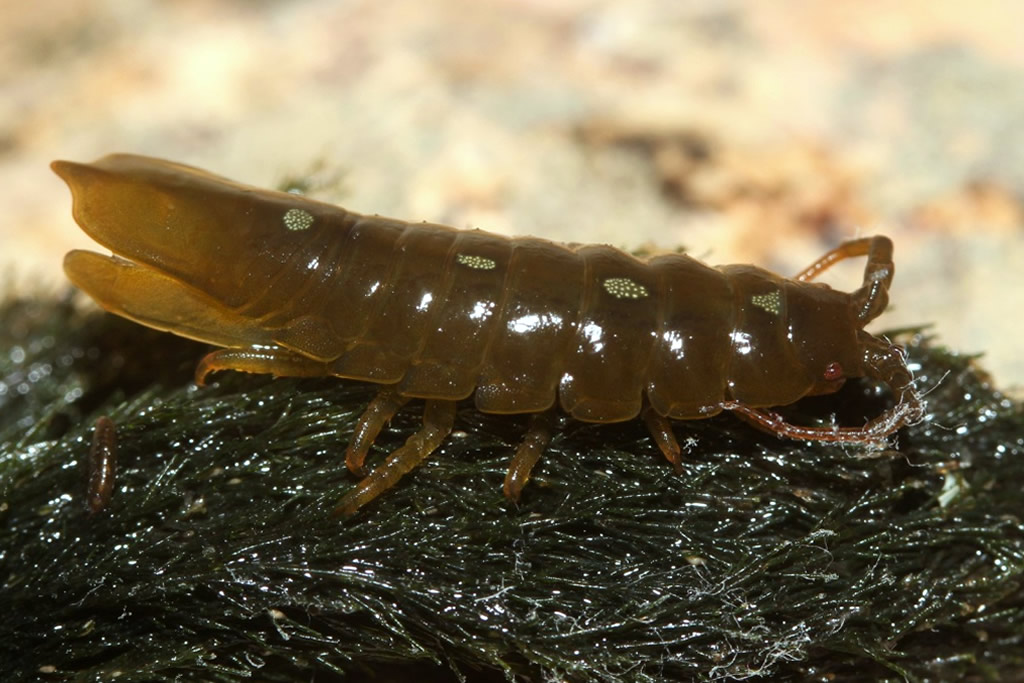Idotea granulosa Rathke, 1843
Status:
Native
ID Difficulty
Identification
Idotea are relatively large, conspicuous and common marine isopods with oval or oblong bodies. Although they often have striking colours and patterns, these are not particularly useful for distinguishing between the various species. Rather, identification should be based on characteristics of the antennae, the coxal plates and the pleotelson.
Males of I. granulosa grow up to 20 mm in length, whilst females reach 13 mm. The unkeeled pleotelson has slightly concave sides, round lateral shoulders, and a long medial tip. The antennules extend past the second segment of the peduncle of the antennae but not as far as the third, whilst the flagellum of the antenna is usually shorter than the peduncle, making the antennae short over all. The coxal plates are fairly narrow and extend from the front to the back on pereonites 4 to 7 only. The body colouring is usually green, brown or reddish, though medial white or silver markings may be present.
Distribution and Habitat
Idotea granulosa is probably the commonest member of the genus, being found on most British and Irish coasts. It can be found under intertidal stones and amongst seaweed, especially in the Fucus vesiculosus (Bladderwrack) zone.
For further information on the distribution of I. granulosa in Ireland, see here.
References
Naylor, E. & A. Brandt. 2015. Intertidal Marine Isopods. Synopses of the British Fauna (New Series), No. 3. Field Studies Council, for The Linnean Society of London.







